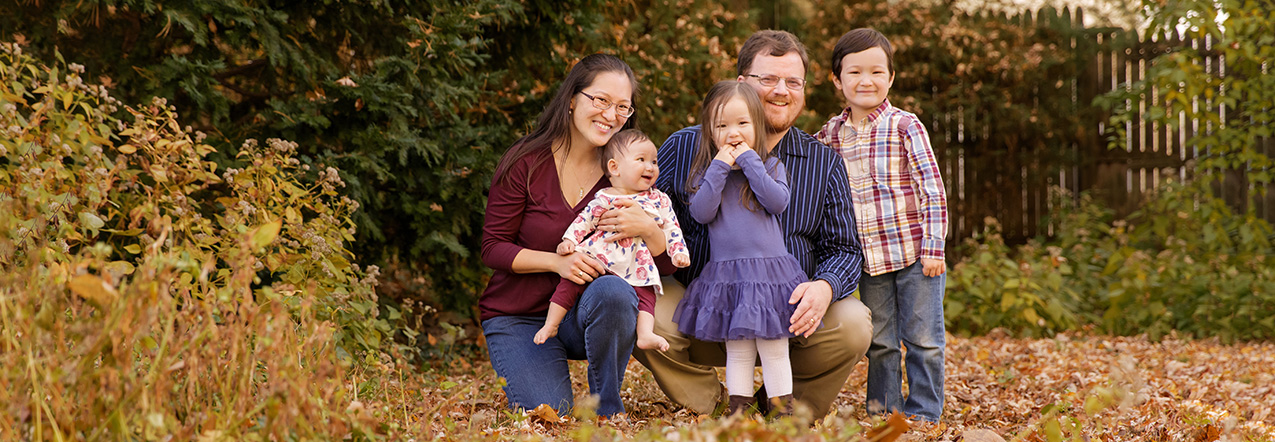-
Posts
808 -
Joined
-
Last visited
-
Days Won
5
Everything posted by Christina Keddie
-
Have you read this? http://www.damiensymonds.net/2015/02/moire.html As long as there's no moiré at 100% (for ALL of your output sizes!), you're fine. Just be sure to check each time you resize for output!
-
The reason why Damien asked if this was for a set of photos taken on a tripod is that unless they were all crooked in exactly the same way, batch straightening won't work. You can't batch straighten for an object in a photo -- you can only batch straighten at a specific angle that you'd carry across the whole set. It would be extraordinarily coincidental if your natural crookedness is at the exact same angle every single time, I'm afraid...
-

Sharpening class
Christina Keddie replied to Colleen Cathers's topic in Miscellaneous questions or problems
It's all explained in great detail in the class. I figured you only needed to know the numbers for budgeting purposes at this point... But if you want it all broken down for you: Three different images. Image A, Image B, and Image C (of three different types, which will be explained in the class). Image A -- three 5x7s (at three different sharpening settings), three 8x10s (at three different sharpening settings), three 20x30s (at three different sharpening settings). Image B -- three 5x7s (at three different sharpening settings), three 8x10s (at three different sharpening settings). Image C -- three 5x7s (at three different sharpening settings), three 8x10s (at three different sharpening settings). -

Sharpening class
Christina Keddie replied to Colleen Cathers's topic in Miscellaneous questions or problems
For the test prints to determine your sharpening numbers, you'll need 21 prints: nine 5x7s, nine 8x10s, and three 20x30s. You can do more sets to more fine-tune your sharpening numbers, but you need at least those 21. For test print purposes, you'll want to use photos that are perfectly in focus, with as little noise as possible, and representative of your more general style. This sounds like it might not be a good candidate for a test print. But after you've done your test prints and determined your sharpening numbers, you can apply Damien's sharpening techniques onto any kind of photo -- he's even got a whole module on how to handle imperfect images. You can bring any kind of photo you'd like into the class for help. -

Sharpening class
Christina Keddie replied to Colleen Cathers's topic in Miscellaneous questions or problems
What kind of question? If it's about payment or other administrative questions, use the Contact Damien and the team section. For questions about the content of the class, read the Print Sharpening Class info page and the class FAQ page, and if your question still isn't answered, here is just as good as anywhere else to ask it. -

Calibration prints
Christina Keddie replied to Pippa's topic in Monitor calibration questions or problems
I answered this question in greater detail here: But the short answer is no, you don't need new prints, as long as the prints you have were from sRGB files with no color correction by the lab. -
Basic question: you know that the clone tool sample moves as you move, right? So when you sample from the rocks to the left of the boy's feet, and then click your first click to clone, it will sample from where you option-clicked, and then will continue sampling in the direction you move as you click to clone. So the little plus sign that moves as you clone shows you where it's sampling from as you move. This, of course, is why you have to resample continuously as you clone. (Forgive me if you already knew that -- just wanted to make sure!)
-
You CLOSE iPhoto as soon as it opens, and never let it touch your files. Unless you've been faithfully exporting the original files out of it each time, you're actually working with just JPGs, as iPhoto "helpfully" converts raw files to JPG for you. Here is a much better way to handle your files and have complete control over where they are at all times: http://www.damiensymonds.net/importing-video
-
And the screenshot? Because I'm sure Damien is dying to weigh in on whether this is actually the best way to handle the cast you're trying to correct.
-
Be aware that you'll need to fix the color space -- by converting, not assigning, of course -- for each of your files. I mention this since you posted a different image just now.
-
ALWAYS a soft brush (0% hardness). Make the brush a lot smaller to get precision (and zoom way in on your image as needed), but never any harder.
-
For FB, 11 or 12. For your blog, check with your host to see what they recommend, but generally around 9 or 10 should be fine. Also, don't resize to 600x900 for FB -- that's not one of the FB-supported sizes. Choose 720, 960, or 2048 on the long edge. (Likewise for your blog -- resize your images to the exact size of the web display.)
-
I am dyyyyyyying for Damo's channel mixer class. It's in the works, but down the priority list a ways...
-

Help with glasses for a newbie!
Christina Keddie replied to Angela Buxton's topic in Help with editing
So sorry, Angela -- I didn't realize that "gift for a family friend" meant a time-sensitive project. My point simply was that Damien won't go into class material here. I'm sure he'll get you sorted on the other stuff here, though, and if you can't work out how to change layer opacity, post about it in the class for his help. -

Removal of object in blurred background
Christina Keddie replied to Kim Fearn's topic in Help with editing
Can you also post the whole photo for context? Generally speaking, you'd want to use a very large soft brush while cloning on a new blank layer, and then mask with varying sizes of a soft brush to clean up, like this: http://www.damiensymonds.net/2010/10/role-of-masks-when-cloning.html But it would help to see the whole photo so we could advise on whether cloning is the best method in this case. -

Help with glasses for a newbie!
Christina Keddie replied to Angela Buxton's topic in Help with editing
So keep on, then, and learn how to change a layer's opacity and how the basics of PS work. -

Help with glasses for a newbie!
Christina Keddie replied to Angela Buxton's topic in Help with editing
This will help a ton. -
File size in bytes (which determines how many files will fit on your drive) is different from file size in pixels (which governs whether your files are high-res enough for print outputs). Give this a read for some basic background: http://www.damiensymonds.net/2015/08/about-jpeg-file-size.html There is no way 1600 images will fit on a 4GB drive, unless you're seriously compromising the file quality. I generally can fit about 900 files on an 8GB drive if I've saved them at 9 quality out of PS (or 85 quality out of LR). And my files are always full-res, because that's what I offer to my clients when I sell digitals.
-
If you went all the way through the troubleshooter Damien linked, it would have linked you to troubleshooter #2: http://www.damiensymonds.net/art_tscs2.html What you have your color space set to in camera is completely irrelevant if you're shooting in raw. It's your raw processor that assigns the color space to your files. Would you mind posting a screenshot of this file now with the document profile indicator turned on? That's where you look to see the color profile.


